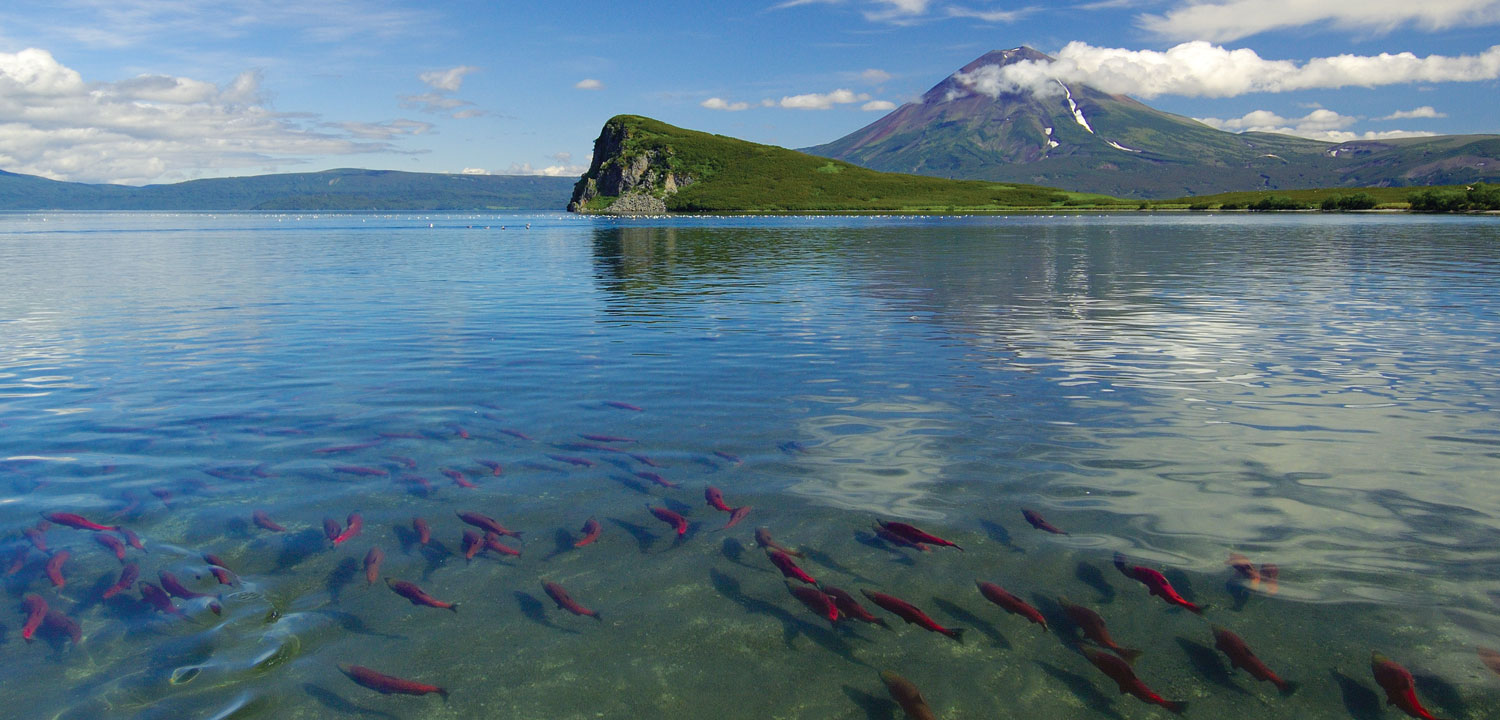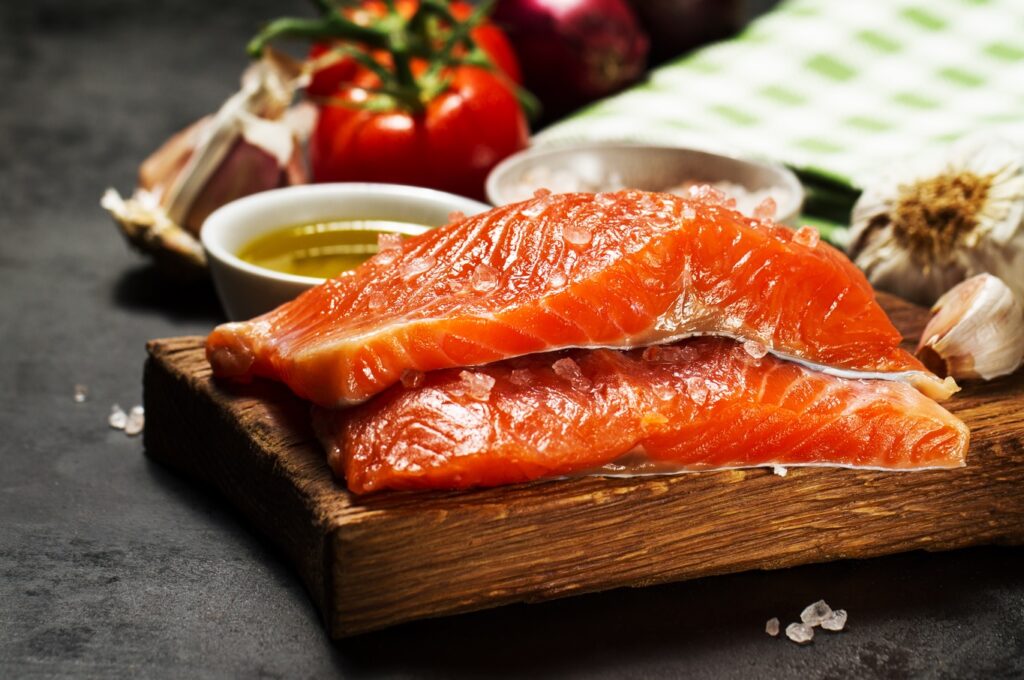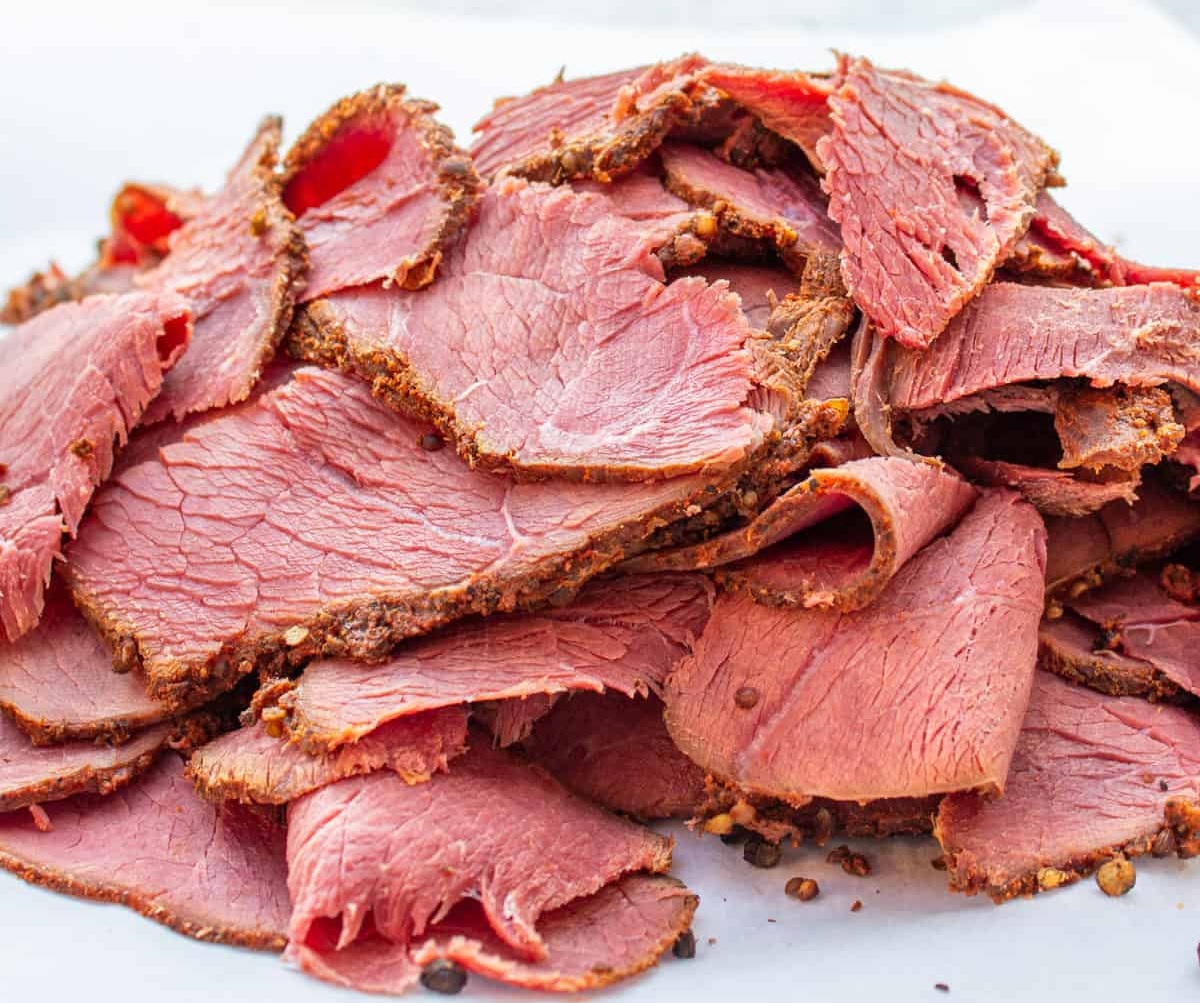Benefits of Wild Alaskan Salmon and Other Wild-Caught Fish
If you are in search of food packed with tremendous nutritional value, you can’t go wrong with wild Alaskan salmon. This fatty fish is highly nourishing and offers numerous health benefits while reducing the risk of various harmful diseases. It’s delicious, versatile, and easily accessible, making it one of the most wholesome sustenance on the planet.[1]
In this blog, we’ll explore the many health benefits of wild Alaskan salmon and other wild-caught fish and the potential risks to be aware of.
Whether you’re a seafood lover or just seeking to improve your diet, you won’t want to miss this deep dive into the world of wild-caught fish.

Benefits of Alaskan Salmon
One thing to mention right away is that wild-caught and farm-raised salmon are not the same. An important point to consider is that almost 75% of the salmon available for consumption is farm-raised.
On the other hand, wild-caught salmon can be more challenging to find and may sometimes come with a higher price tag due to its limited availability. However, the health benefits of wild Alaskan Salmon and other wild-caught fish are totally unmatched.[2]
- High in Omega-3 Fatty Acids:
Alaskan salmon is one of the best sources of omega-3 fatty acids, a nutrient crucial for brain health, reducing inflammation, and supporting heart function.[3]
- Rich in Protein:
Alaskan salmon is an excellent source of high-quality protein that can help build and repair tissues in the body.
- Packed with Vitamins and Minerals:
This fish is also rich in essential minerals and vitamins such as vitamin D, vitamin B12, niacin, and selenium, all of which play important roles in maintaining overall health.
- Reduces the Risk of Heart Disease:
Regularly consuming Alaskan salmon may help lower the risk of heart disease by regulating blood pressure and triglyceride levels, as well as improving cholesterol levels.
- Reduces Inflammation:
Alaskan salmon is rich in antioxidants and anti-inflammatory compounds that are helpful in reducing inflammation throughout the body. This may help prevent chronic diseases such as arthritis, cancer, and heart disease.
- Improves Bone Health:
Alaskan salmon is also rich in calcium. We must all have heard of the significance of calcium since our childhoods. This element is essential for maintaining strong bones and preventing osteoporosis.
Incredible Nutritional Facts of Salmon
The health benefits of wild Alaskan salmon seem never-ending. Every nutritionist and food connoisseur agrees that salmon is not just a pretty fish but a nutritional powerhouse! Following is a list of all the crucial nutrients found in Alaskan salmon.[5]
- Protein
- Omega-3 fatty acids (EPA and DHA)
- Vitamin B12
- Vitamin D
- Selenium
- Niacin (Vitamin B3)
- Phosphorus
- Magnesium
- Potassium
- Iron
- Calcium
- Zinc
- Vitamin A
- Vitamin E
- Vitamin K
- Thiamin (Vitamin B1)
- Riboflavin (Vitamin B2)
- Pantothenic acid (Vitamin B5)
- Choline
- Betaine
In addition to containing all these beneficial compounds, you can also have peace of mind while consuming wild salmon as it is free from artificial additives like:
- Harmful chemicals
- Preservatives
- Artificial coloring
- Pesticides
- Antibiotics
- Growth hormones
- GMOs
How is Wild Salmon Healthy For Me?
Due to the extensive nutritional content, almost everyone can benefit from the health benefits of wild Alaskan salmon.
For instance, Omega-3 fatty acids in wild salmon have anti-inflammatory properties that may help alleviate symptoms of conditions like arthritis and asthma.
Wild salmon’s high protein content also benefits athletes and bodybuilders as it is essential for muscle growth and recovery after intense exercise. Moreover, it’s all low-fat protein, making it an ideal choice for those watching their weight.[6]
Vitamin D is another nutrient abundant in wild salmon. This vitamin helps regulate bone health and prevent conditions like osteoporosis. Vitamin D has also been linked to a stronger immune system, making wild salmon an excellent food choice for those who want to stay healthy and ward off infections.
Consuming wild salmon is also beneficial for pregnant women. The Omega-3 fatty acids and DHA it contains are crucial for fetal brain and eye development. Moreover, pregnant women can also benefit from the high-quality protein and Vitamin D present in wild salmon.
The Potential Risks of Alaskan Salmon Consumption
While the health benefits of wild Alaskan salmon and other wild-caught fish are abundant, it’s also important to be mindful of certain potential risks associated with consuming these fish.[4]
- One of the main concerns is the risk of mercury contamination. Mercury is a heavy toxic metal that can accumulate in the bodies of fish and other sea creatures. While the levels of mercury in Alaskan salmon are generally low, it’s still important to limit consumption, particularly for pregnant women and young children.
- Another concern is the risk of bacterial contamination, specifically from Vibrio bacteria. This can cause symptoms such as diarrhea, fever, and abdominal cramps. Handling and cooking Alaskan salmon properly is vital to reduce the risk of bacterial contamination.
- Some people may also be allergic to salmon or other types of fish. If you experience symptoms such as swelling, itching, or difficulty breathing after consuming Alaskan salmon, you should seek medical attention immediately.
The Bottom Line
After going through the long list of health benefits of wild Alaskan salmon and other wild-caught fish, it has been established that Alaskan salmon and other fin-tastic wild catches are perfect for a diet that is both nutritious and tasty.
So, if you haven’t already, it’s definitely time to give wild Alaskan salmon a try. Whether you grill, bake, or pan-sear, there are plenty of delicious ways to incorporate it into your meals. Besides, who doesn’t love an excuse to eat more tasty seafood?
To experience the real authentic taste of wild-caught fish, give our partners a visit to have a look at several seafood suppliers they have listed there, along with great promotional deals and discounts for all seafood enthusiasts. You get to enjoy a feisty fishy meal at an amazing price!
Best place to order wild Alaskan salmon
In our research, we came across many butcherbox companies who can deliver in the USA. Below are the best ones:
FarmFoods: Big selection of meat and wild-caught Alaskan salmon
SeaToTable: Specialized in fish and seafood
Good Ranchers: Beef, Chicken, Pork, Game and Seafood
Perdue Farms: All-round grocery store. No Alaskan salmon but Norwegian Salmon.
Frequently Asked Questions
- Why is wild salmon better for you?
Wild salmon is better for you because it tends to have lower contaminants and higher beneficial nutrients like omega-3 fatty acids. Wild salmon is also less processed and free of added hormones and antibiotics.
- Is it safe to eat wild salmon every day?
While there is no official recommendation for how much salmon to eat, some studies suggest that consuming salmon a few times a week can have health benefits. However, awareness of the potential risks of consuming too much seafood, such as exposure to environmental contaminants like mercury, is important.
- Is wild salmon better than normal salmon?
“Normal” salmon usually refers to farmed salmon, which is generally less healthy than wild salmon due to higher artificial chemicals and lower essential nutrients.
- Is wild-caught salmon the healthiest?
Due to the amazing health benefits of wild Alaskan salmon and other wild-caught fish, its more natural diet, and the environment, it is generally considered to be healthier than farmed salmon.
- Is wild salmon a superfood?
While there is no specific definition of a “superfood,” wild salmon is often considered one due to its nourishing blend of high omega-3 fatty acids, protein, and other beneficial nutrients.
[1] Hu XF, Chan HM. Seafood Consumption and Its Contribution to Nutrients Intake among Canadians in 2004 and 2015. Nutrients. 2020 Dec 29;13(1):77.
[2] Mendivil CO. Fish Consumption: A Review of Its Effects on Metabolic and Hormonal Health. Nutr Metab Insights. 2021 Jun 3;14:11786388211022378.
[3] Damsgaard, C.T., Lauritzen, L., Hauger, H. et al. Effects of oily fish intake on cardiovascular risk markers, cognitive function, and behavior in school-aged children: study protocol for a randomized controlled trial. Trials 17, 510 (2016).
[4] Foran JA, Carpenter DO, Hamilton MC, Knuth BA, Schwager SJ. Risk-based consumption advice for farmed Atlantic and wild Pacific salmon contaminated with dioxins and dioxin-like compounds. Environ Health Perspect. 2005
[5] Kris-Etherton PM, Harris WS, Appel LJ; American Heart Association. Nutrition Committee. Fish consumption, fish oil, omega-3 fatty acids, and cardiovascular disease. Circulation. 2002 Nov 19;106(21):2747-57.
[6] Raatz SK, Johnson LK, Rosenberger TA, Picklo MJ. Twice weekly intake of farmed Atlantic salmon (Salmo salar) positively influences lipoprotein concentration and particle size in overweight men and women. Nutr Res. 2016 Sep;36(9):899-906.





